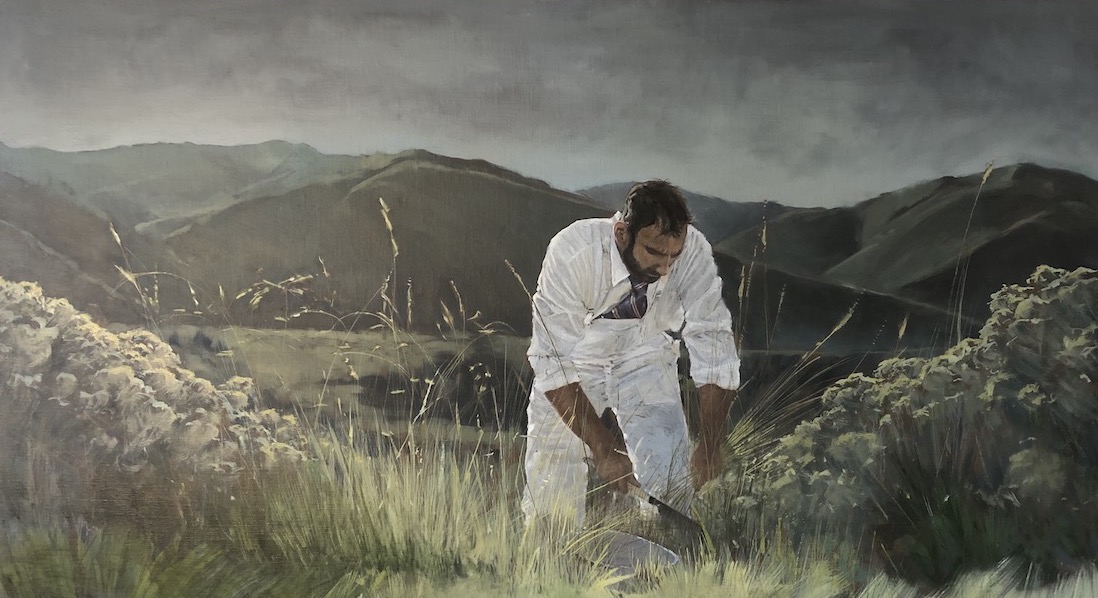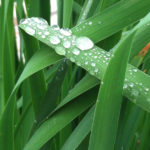The first time I heard the word “terroir” was on a day my father walked me through his father’s property. He explained to me the value of the soil on which we walked. I remember him picking up a handful of dirt and showing it to me, while I dug the toe of my shoe into it and tried my best to understand what he was saying. Around the time that Secretariat won the Kentucky Derby, I heard the term terroir used again while enjoying a bottle of wine with some friends. I had a brief flash of my father’s voice saying to me
“Are you listening?”

At that time, I was focused on an intense conversation about horse racing and pushed back the thought, but it did occur to me that the term my father had carefully explained probably meant something far more important than what I originally understood. The topic continued to pop up in well-appointed tasting rooms and fine dining restaurants, where I would listen to sommeliers speak poetically and empirically about each bottle of wine, the vineyards in which they were borne and notes from chipotle to cherry. They dropped terms like “full bodied” and “oaky” and I continued to ponder.
“Lessons from our fathers ignored eventually come around.”
Late night, in my office, again, I had the notion to google the word lingering most in my mind and spend some time on it. Now the obvious definition of “terroir” technically refers to “the combination of factors including soil, climate, and sunlight that gives wine grapes their distinctive character.” Even before the French, ancient civilizations recognized that different regions produced different wines. But it was in Burgundy that Benedictine and Cistercian monks compiled their observations and began to set boundaries based on different terroir. (They were even rumored to have tasted the varying soils.) Cutting to the chase, wine is about grapes, and grape vines—arching wildly from the earth—are defined by dirt. Nowadays, terroir has come to represent so much more than the resulting mineral makeup of an environment. And it impacts so much more than wine. Synthesized down to its most base meaning, terroir is character. It’s what separates one experience, person, place, or thing from another. As long as mankind has existed, we’ve felt an impulse to connect to the land. The earth tells the story of our history in its rich layers. The terroir of a place has come to define its very essence, embodied by factors both tactile and intangible.
In order to truly find oneness with our environment, we must connect with its terroir, from the actual brick and mortar of our local surroundings to the very scent carried on the breeze. Putting this all together, it hits me that the newest offering from André, The Stables Collection, is inspired by that exact notion of terroir connecting and elevating daily experience. The original commission was for a private client, who—while waiting for the delivery of a new Ferrari 458—recognized the need for an equally crafted environment in which to house his beautiful machine. After all, an extraordinary car cannot live in an ordinary garage. The design, characterized by deriving its value from raw materials surrounding a patron’s home, knit together this space with his Tuscan-style house, marrying the modernity of his fine car collection with the rustic ease of a rural, Italian barn. The man envisioned himself, when finishing a day of driving, turning off the car and—in a serene yet masculine setting—indulging in the age-old ritual of coming down from the day and transitioning into home life.
“The space became the epitome of terroir.”
Ultimately, guided by the meticulous eye of the Master Painter and his elite personal crew, the space was crafted using local sands, clays and grasses from the surrounding landscape. The final product—which took eight weeks and $350,000 to complete—was so spectacular that the client agreed to allow the André design team to create a collection inspired by his concept and space. And, so, the Stables Collection was inaugurated and made available to select clients around the world, along with exclusive, limited-edition accessories including a hand-painted wooden toolbox for car-care products, a traditionally handcrafted wooden chore bucket for washing prize cars, a matching hat and pair of driving gloves, a leather cigar case, hand-rolled André cigars and a luxe leather key tray. Though on the same theme, when commissioned, each incarnation of the Stables Collection is custom and unique, inspired and curated based on that particular setting, its anticipated contents and, of course, the prevailing cultural terroir. I was invited to visit the original space, and the new 458. As the patron opened another bottle of wine for us to enjoy, I smiled as I imagined conversations with my since-passed father; conversations about the soil that made me who I am, the horses at the Derby and their stock, the lineage of Ferrari and the attributes to the character that made the patron of the first Stables Collection space a successful man.


















